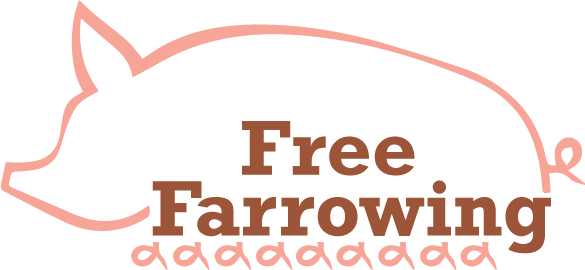The farrowing and lactation environment must conform to legislation and codes of practice, as well as satisfy the needs of the three main stakeholders involved: the sow, the piglets and the stockworker.
If you are thinking of making changes to your farrowing accommodation there are a number of questions you should consider:
1. Conformity – will it:
- Meet health and welfare requirements as laid down by regulations?
- Meet the requirements of your assurance scheme?
- Meet environmental requirements?
Visit our know the rules page to help answer these questions.
2. For the sow – will it:
- Allow natural nesting behaviour prior to farrowing?
- Provide piglet protection features to control sow movements and reduce the risk of over-lying?
- Provide adequate space?
- Provide adequate thermal comfort?
- Provide adequate stimuli to facilitate good maternal behaviour?
Our why free farrowing?, farrowing systems and research pages can help answer these questions.
3. For the litter – will it:
- Provide good protection from over-lying by the sow?
- Attract piglets into the creep area quickly?
- Provide high levels of environmental comfort?
- Provide protected space (e.g. creep) to allow full recumbency of all piglets?
- Provide low risk of disease transmission?
Visit our specific pen features page to download guides on piglet protection and creep design.
4. For the staff – will it:
- Allow efficient, safe access to the sow and her litter to perform husbandry tasks?
- Permit good observation of the sow and her litter?
- Allow easy feeding, cleaning and addition of bedding/manipulable materials?
- Allow feed and water intake to be observed and monitored?
- Facilitate good hygiene and low levels of disease transmission between pens?
Visit our specific pen features page to download guides on suitable pen partitions to facilitate monitoring; recommendations on drinker and feeder types and position that promote hygiene and high intake; recommended creep designs. Visit our free farrowing husbandry page to find out top tips to assist stockworkers.
5. Economics – will it:
- Return the same production figures as conventional systems?
- Have acceptable running and maintenance costs?
Visit our alternative system trials to find out about the production figures of free farrowing and lactation systems. Visit our free farrowing economics page for information on the costs of free farrowing systems.
6. Effects on the environment – will it:
- Allow legislative requirements to be met?
- Allow emissions to the environment to be minimised?
Calculate your carbon footprint by visiting Farm Carbon Toolkit. You can also find useful information on building requirements and environmental responsibilities by visiting the AHDB Knowledge Library.
7. Future-proofing – will it:
- Meet the potential changes to legislative and assurance scheme requirements?
- Meet any potential changes in the size and prolificacy of domestic sows?
- Maintain acceptable running and maintenance costs to help reduce any capital investment costs and costs of production?
Have you thought about the building shell?
The shell of the building and how many pens per room are important considerations. Weighing up costs of multiple rooms versus optimal number for management and sow behaviour is something to think about. For some advice on this please visit our free farrowing husbandry page.

Further information
If, after going though the check-list and visiting the various links provided, you are in any doubt about your answers please get in touch. We can provide consultation or if necessary direct you to experienced advisors.

